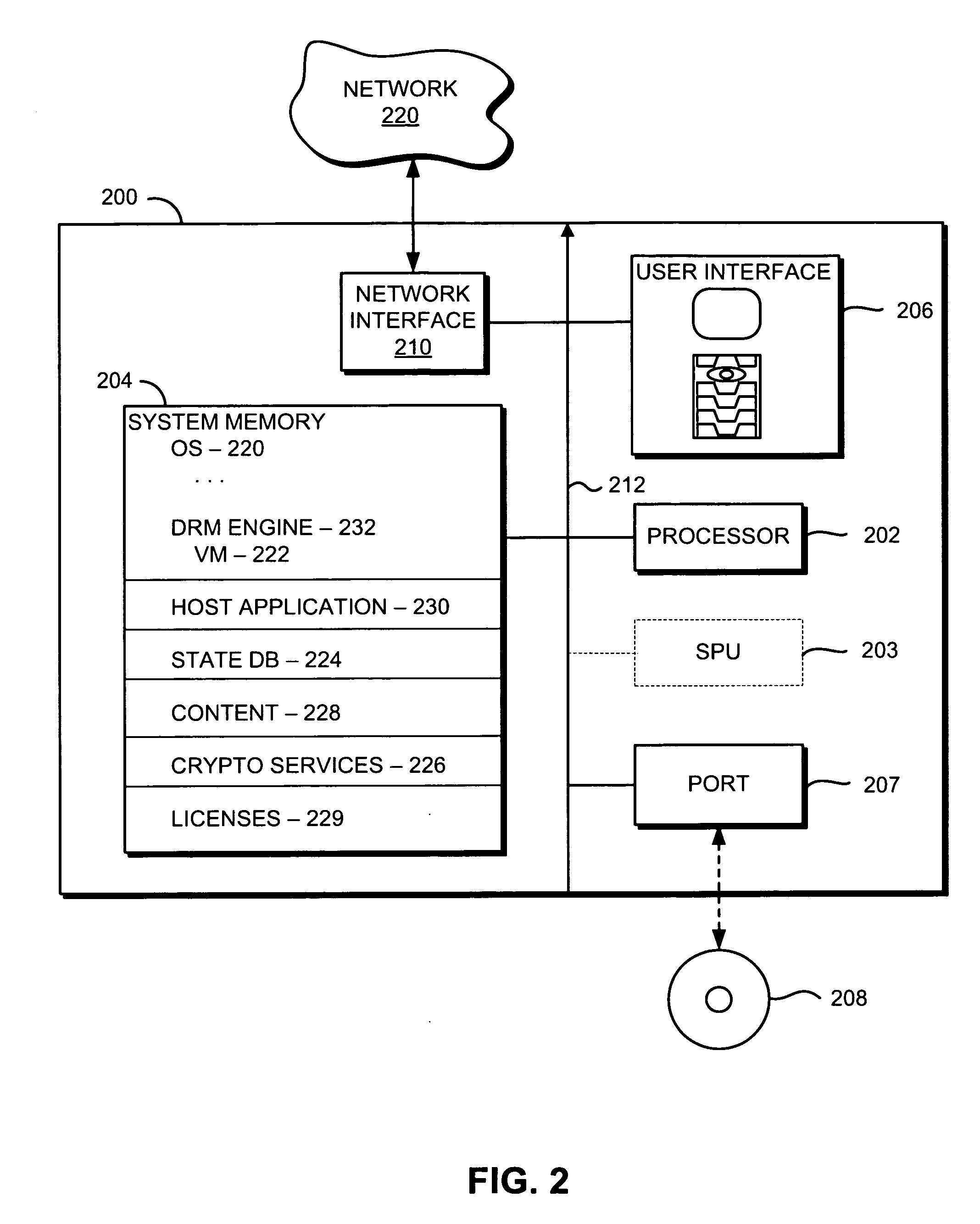Digital rights management engine systems and methods
a technology of digital rights management and engine systems, applied in the field of computing systems, can solve the problems of over-restrictive, over-complex, and relatively inflexibl
- Summary
- Abstract
- Description
- Claims
- Application Information
AI Technical Summary
Benefits of technology
Problems solved by technology
Method used
Image
Examples
implementation examples
5. IMPLEMENTATION EXAMPLES
[0199] Several examples are provided below to illustrate how various embodiments of the systems and methods described herein could be applied in practice. The systems and methods described herein can enable a wide range of rights management and other functionality, and thus it will be appreciated that the specific examples that are given here are not intended to be exhaustive, but are rather illustrative of the scope of the inventive body of work.
[0200] 1.11. Example: Users, PCs, and Devices
[0201] Assume that you want to implement a DRM system that ties the right to play content to a particular user, and you want to make it easy for the user to play content on all the playback devices that he or she owns. Assume that you decide that you are going to provide users with software that enables them to add playback devices as needed (e.g., mobile players). Also assume, however, that you want to set some policy to limit the number of general-purpose devices to ...
examples
[0482] The following table shows an example of a hierarchy of Host Objects:
NameValueChildrenNode1NameValueChildrenType“De-vice”NameValueChildrenAttributes2NameValueChildrenColor“Red”Size78Domain“TopLevel”
[0483] In this example, calling System.Host.GetObject(parent=0, name=“Node”) returns a type ID of 0 (i.e., container), and causes the handle value of 1 to be written in the buffer supplied by the caller. The size of the value is 4 bytes.
[0484] Calling System.Host.GetObject(parent=0, name=“Node / Attributes / Domain”) returns a type ID of 2 (i.e., string), and causes the string “TopLevel” to be written in the buffer supplied by the caller. The size of the value is 9 bytes.
[0485] Calling System.Host.GetObject(parent=1, name=“Attributes / @1”) returns a type ID of 1 (i.e., integer), and causes the integer 78 to be written in the buffer supplied by the called. The size of the value is 4 bytes.
[0486] Calling System.Host.GetObject(parent=0, name=“DoesNotExist”) returns the error code ERROR...
example
[0952]
G1zXF9Sz / zCwH6MaFm0ObOQcxuk= mjoyW+w2S9iZDG / ha4eWYD1RmhQuqRuuSN977NODpzwUD02FdsAICVjAcw7f4nFWuvtawW / clFzYP / pjFebESCvurHUsEaR1 / LYLDkpWWxh / LlEp4r3yR9kUs0AU5a4BDxDxQE7nUdqU9YMpnjAZEGpuxdPeZJM1vyKqNDpTk94= MIICh... AqPV0nvNj / vc51IcMyKJngGNKtM= G1zXF9Sz / zCwH6MaFm0ObOQcxuk= TcKBsZZy+Yp3doOkZ62LTfY+ntQ= urn:x-octopus.intertrust.com:secret-key:2001
PUM
 Login to View More
Login to View More Abstract
Description
Claims
Application Information
 Login to View More
Login to View More - R&D
- Intellectual Property
- Life Sciences
- Materials
- Tech Scout
- Unparalleled Data Quality
- Higher Quality Content
- 60% Fewer Hallucinations
Browse by: Latest US Patents, China's latest patents, Technical Efficacy Thesaurus, Application Domain, Technology Topic, Popular Technical Reports.
© 2025 PatSnap. All rights reserved.Legal|Privacy policy|Modern Slavery Act Transparency Statement|Sitemap|About US| Contact US: help@patsnap.com



